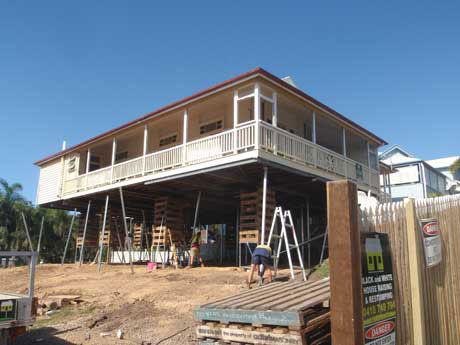Everything You Need To Know About House Restumping
- zoehsewell
- Feb 4, 2021
- 3 min read
Updated: Jul 8
If you are looking at some solutions as to how you can keep your home strong and safe from termite damage or any other damage, then you should look at house restumping solutions. There are plenty of things that you must know about this type of work, including what the signs are and what some of the causes are. These are just a few of the things to consider, so make sure to keep reading on to find out more about this home-based project.
Signs My House Needs Restumping
If you are thinking about house restumping solutions and are wondering if your home needs this work done or not, then you should get your home inspected first. You can hire an expert in this industry and they will have the required tools and expertise to let you know what the actual condition is. There are a few signs that you can look for that would help you to know if this needs to be done or not. For instance, if you start to notice cracks that are visible on the walls or a sagging, bending, and uneven floor. You might notice if your door and windows stick or not. These are some warning signs that clearly state that your house needs restumping and you must get your house inspected by experts.

Causes of House Restumping
For those who don’t know what house restumping solutions are - it is simply the process of replacing the foundation of the home after severe damage, such as:
Materials used have rotted away
Termite damage
Softening due to flooding exposure
Changes in soil condition because of an earthquake
Wrong installation of foundation
Constant susceptibility to moisture
Make sure that you are aware of these reasons. If you have experienced flooding or earthquakes lately, then you might want to undertake a thorough inspection before taking a call.
Materials Used
Another thing to know about house restumping solutions is the types of materials that are often used for this work, such as:
Timber – This is the most convenient and traditional option that is used because it is extremely affordable and easily available. This can last for around 30 years without any issues unless termite infestation sets in, so make sure that it is regularly inspected to keep the infestations at bay.
Concrete – If you don’t mind spending a bit more, then concrete is going to be an ideal option and it will last for around 20 years more than timber. This will be great for all types of weather conditions and it won’t be subject to rotting or pest infections as well as being non-combustible and relatively maintenance-free.
Steel – This is going to be just as good as concrete except that it takes more maintenance than the other options due to rust. This would require a protective coating that might need to be redone and you should have the maintenance done at least 5 years apart, but this depends on the soil and weather conditions.
If you are aware of the material, then it will be much easier for you to decide which one is going to work the best for your needs.
What Drives the Cost?
The final thing that you must know is what drives the cost of any house restumping solutions when you are trying to get an estimate. Make sure that you are having the experts do an inspection first so that you can get an accurate cost. And the factors that can impact the price are:
Stumps needing to be replaced
The material of the stump
Space beneath the home
Condition of the soil
Existing foundation
Existing holes
Ensure that you are thinking about all of these things when you are considering how much you are going to pay.
It is vital that when it comes to house restumping solutions you should know what is what and what the signs are that show you would need this work done. Make sure that if the flooring, doors, or windows seem uneven or if they aren’t working right then you must get an inspection done. Also, you should get a few quotations from different service providers, so that you can choose the best deal that fits within your budget and fulfills your purpose also.







Comments